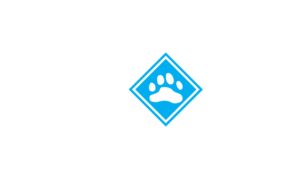
The Vermont Land Trust (VLT) and The Nature Conservancy (TNC) have recently donated trail easements on three segments of the Catamount Trail involving parcels located in four towns, Elmore, Craftsbury, Eden and Lowell. The total length of these 3 trail segments is approximately 4 miles and together the donated easements represent one of the largest easement acquisitions in the history of the Catamount Trail Association.
In 1997, the Vermont Land Trust and The Nature Conservancy’s Vermont Chapter created the Atlas Timberlands Partnership (ATP) to purchase and manage thousands of acres of timberland in the northern Green Mountains. The two organizations jointly own and manage multiple parcels of forestland totaling approximately 23,000 acres. This partnership represents one of the largest timberland holdings in Vermont and is host to newly conserved segments of the Catamount Trail.
About 165 miles of the Catamount Trail, a 300-mile public-access ski trail that runs the length of Vermont, cross private land. The other 135 trail miles are located on state, federal, and municipal lands. Since 1998, the number of landowners that host the trail has more than doubled due to subdivision. CTA began its Trail Protection Program in 1998 to permanently conserve the trail corridor and the work continues today. The CTA works with landowners and managers to acquire trail easements that will protect the trail for future generations to enjoy. “Some easements are donated, as was the case with this ATP project,” notes Amy Kelsey, Executive Director of the Catamount Trail Association. “In other instances, the CTA purchases easements to protect segments of the trail.”
The goal of ATP is to sustainably manage timber stock while protecting the land’s ecological integrity. According to Carl Powden, Vermont Land Trust’s long-time Regional Director in the Northern Greens, “The ATP lands were purchased to protect and enhance their economic, biological and recreational significance from the outset.” Public access is encouraged on all Atlas lands, where logging roads provide access for skiing, dog sledding, hiking, hunting, walking, and wildlife viewing. (Those wishing to explore the ATP lands should note that properties may be closed to public access during timber harvests due to public safety concerns.)
Powden also points out that protection of the Catamount Trail has been a longstanding goal for all organizations involved. This is not the first time VLT and TNC have employed their skill and expertise to benefit the CTA. The three organizations have partnered in a variety of capacities in the past to conserve the trail and the lands it crosses. This project is an example of the strong working relationships within Vermont’s conservation community, relationships that help maintain traditional public uses, contribute to the local economy and culture, and encourage healthy outdoor recreation.
As part of this project, trail sections just south of Elmore State Park (CT Section 25), north of Green River Reservoir (CT Section 27), and near the top of Hazen’s Notch (CT Section 29) are now protected. It is no small coincidence that many of these ATP parcels border state owned properties. The original purchase was fueled by the opportunity to conserve large blocks of forestland over time, for the myriad benefits those blocks provide: ecological, economic, and recreational. Should VLT and TNC choose to sell this forestland, the Catamount Trail will retain a right of way, ensuring the trail’s integrity from Massachusetts to Quebec into the future.
Phil Huffman, Director of Landscape Conservation & Policy for The Nature Conservancy’s Vermont Chapter, summed things up: “This is a great example of collaboration on a project that provides a number of important public benefits and builds on past efforts by many different entities. We are really pleased to help secure a permanent route for the Catamount Trail, one of Vermont’s unique assets, in a way that fits well within our overall goals for the Atlas Timberlands.”
About the Vermont Land Trust
Over the past three decades, the Vermont Land Trust has conserved more than a half-million acres. This has included more than 775 farms operated by innovative farmers committed to the future of farming and the local food economy. VLT has also worked with families, towns, and businesses to protect more than 380,000 acres of forestland from subdivision, fragmentation, and development. This work protects wildlife habitat, recreational access, travel ways used by wide-ranging animals, and the maple sugar and timber industries. Visit www.vlt.org for more information.
About The Nature Conservancy
Chartered in 1960, the Vermont Chapter of The Nature Conservancy has helped protect more than 183,000 acres of the state’s most ecologically significant natural areas. TNC works to conserve Vermont’s slice of the Earth’s biological diversity — the richness and variety of life in all its forms. The Nature Conservancy is a nonprofit organization that is distinct from federal and state agencies and is one of the largest land trusts in the nation with a primary objective of protecting the species and natural communities that comprise Vermont’s natural heritage. Visit www.nature.org for more information.









